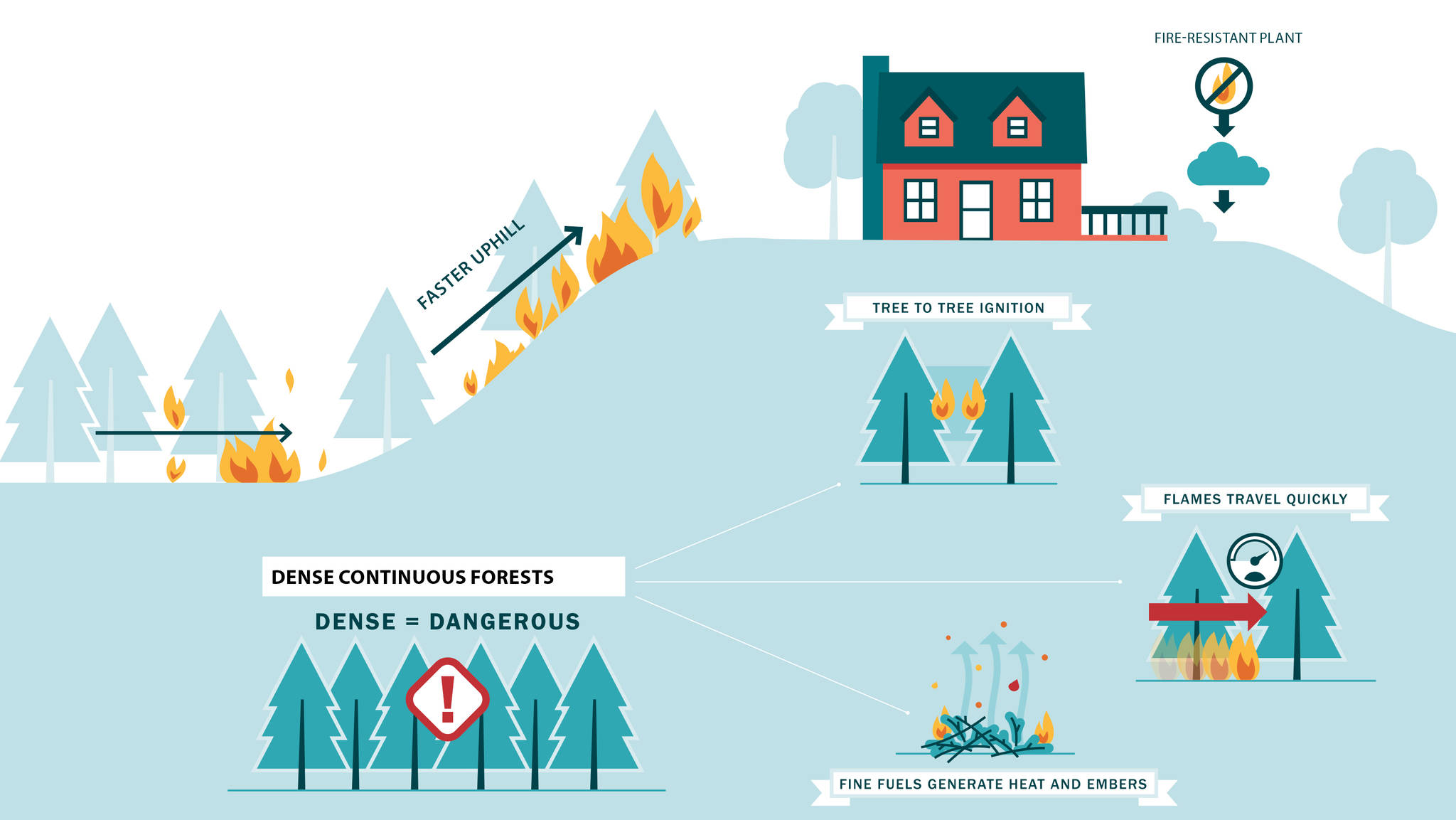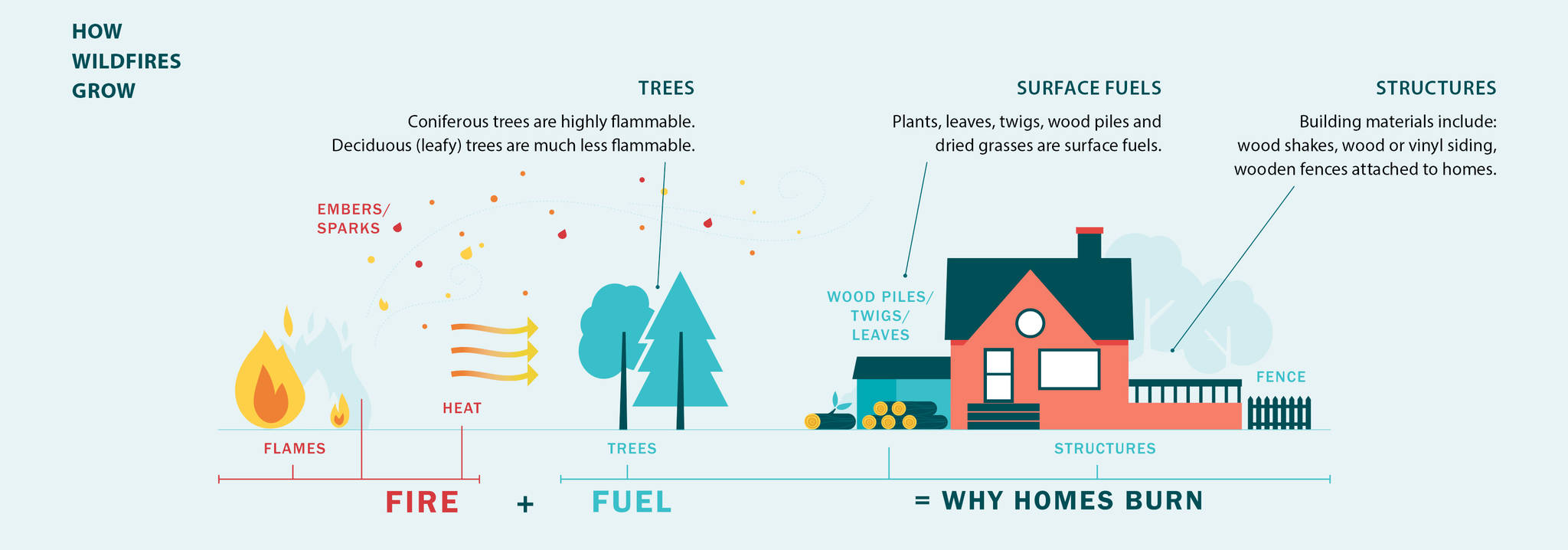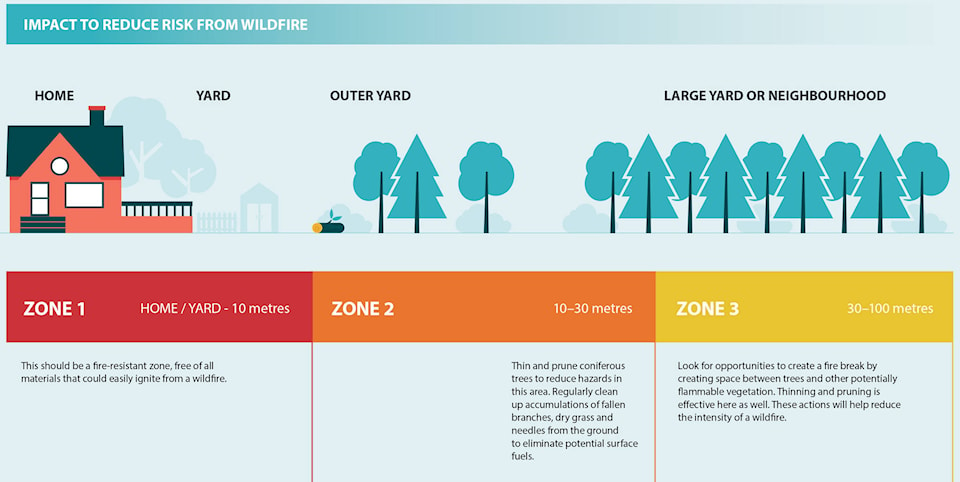Kitimat fire chief Trent Bossence says residents of especially Kitamaat Village, Cablecar and Strawberry Meadows need to take precautions to prevent damage from wildfires should they break out in the district.
“As we know the current forest conditions are extremely dry. With conditions like this, the fuel load within the forest floor is highly receptive to any type of spark and will burn extremely fast and unpredictable,” said Bossence.
“Kitimat and the surrounding valleys are not immune to forest fires and conditions like we are currently experiencing increase that risk exponentially.”
Bossence said residents and visitors to the district must be extremely cautious when working or playing outdoors in the current conditions and report any signs of smoke immediately.
“We urge the public to respect the fire restrictions that are currently in place and hold off on having any type of open burning (campfire or otherwise) until conditions improve and the restrictions are lifted.”
Tips from BC Wildfire on how you can prevent and slow down forest fires at home:
We often choose to live surrounded by the natural environment and trees are a cherished part of our relationship with nature. By following these recommendations you can have a lush, green yard that is also resistant to wildfire.
- clear build-up of pine needles and leaves away from the base of the house
- create a 3-meter fire-free area on all sides of the house
- clear trees and shrubs of dead debris and space trees and shrubs to slow the spread of an approaching wildfire
- plant native wildflowers and fire-resistant plants
- keep lawns trimmed and irrigated as they serve as good fire breakers, as do rock gardens and xeriscapes
-“Limb-up” trees around your house by removing lower limbs that are within 2.5 meters of the ground and trim the limbs hanging over the house
- use non-flammable (Class A) roofing materials
- clear gutters of leaves and debris
- ensure that chimneys for all wood burning appliances are screened to prevent the escape of live embers
- remove excess vegetation along the road.
Trees to plant
Deciduous (leafy) trees are resistant to wildfire and include:
• poplar, birch, aspen, cottonwood, maple, alder, ash and cherry
Maintenance
• Include debris clean-up in your spring and fall yard maintenance.
• Dry leaves, twigs and branches are flammable and should be removed from your yard and gutters.
• Older deciduous (leafy) trees can have rot and damage that makes them susceptible to fire. An arborist or forester can help you assess the condition of mature trees.
Trees to avoid
Coniferous trees, with cones and needles, are highly flammable and should not be within 10 metres of your home.
• spruce, fir, pine and cedar
If these trees ignite within 10 metres of your home, the direct flames and intense heat can cause damage or even ignite your home.
Bark mulch and pine needles
Do not use bark or pine needle mulches within 10 metres of your home, since they are highly combustible. Gravel mulch and decorative crushed rock mulch significantly reduce the risk of wildfire. Bark mulch is highly flammable.
Firewood piles
Wood piled against a house is a major fire hazard. Moving your firewood pile may be a key factor that allows your home to survive a wildfire. Clean up any such areas regularly, since easily ignited debris often collects here.
Firewood piles should be at least 10 metres from your home.
Landscaping and yards
A FireSmart yard includes smart choices for plants, shrubs, grass and mulch. Selecting fire-resistant plants and materials can increase the likelihood of your home surviving a wildfire.
Within 10 metres of the house plant low-density, fire-resistant plants and shrubs. Avoid having any woody debris present, including mulch, since it can provide places for fires to start.
Fire resistant plants have:
• moist, supple leaves
• minimal accumulation of dead vegetation
• water-like sap that produces little odour
• low amount of sap or resin material
Highly flammable plants have:
• aromatic leaves or needles
• accumulations of fine, dry, dead material
• resin or oils
• loose, papery or flaky bark
On-site fire tools
Every home should have readily accessible shovels, rakes, axes, garden hoses, sprinklers and ladders to assist in suppressing wildfires.
Powerlines
Power lines should be clear of branches and other vegetation. Contact your local utility company to discuss removing any branches or vegetation around overhead electrical installations.




